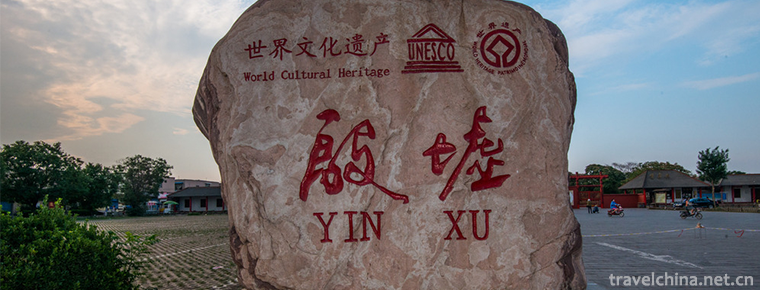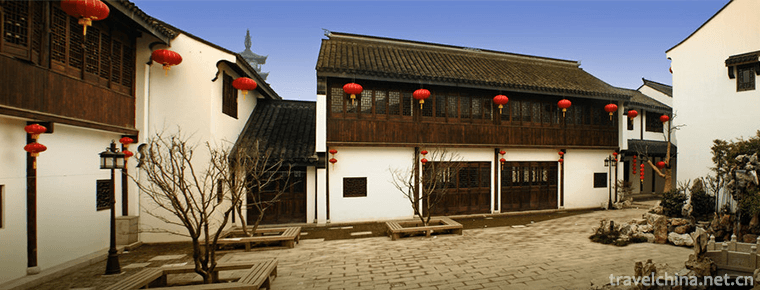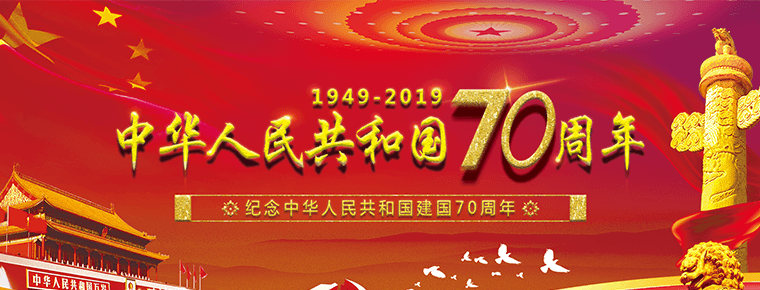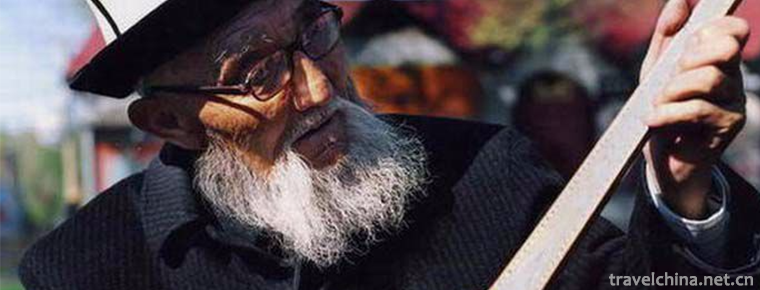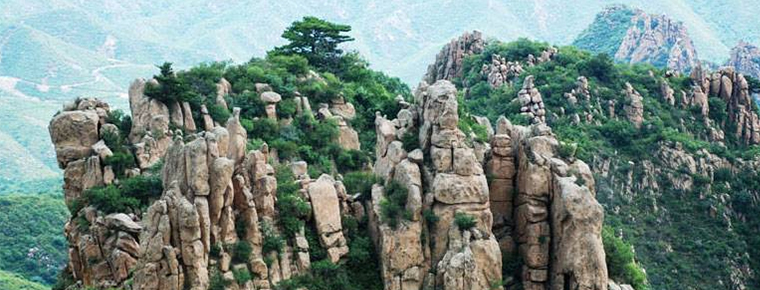Cai Lun
Cai Lun
Cai Lun(?-121 years ) Zhong Zhong, a member of Guiyang County in Eastern Han Dynasty. Emperor Ming of Han Yongping entered the palace in the end, Zhang and two years (AD 88). Cai Lun was promoted to the throne because of his contributions to the queen mother. Regular service And Cai Lun took the honor. the nine great ministers of state And Shang Fangling 。 Cai Lun summed up past experience of papermaking to innovate papermaking technology, and finally made " Cai Hou paper " 。 Yuan Xing first year (AD 105) memorial court Han and Emperor ordered the promotion of his paper making method. 。 In the first year of Jian Guang (AD 121), he died of suicide due to power struggles. 。
Cai Lun's papermaking technology was listed as "ancient China". Four great inventions " It has made outstanding contributions to the spread of human culture and the progress of world civilization, and has been respected by people for thousands of years. 。 Paper workers are regarded as the originator of papermaking and "paper gods". 。 Mike Hart " The 100 Tsai Lun came in seventh place. 。 Us " times "The best inventor in history," published by weekly magazine, Tsai Lun. 。 The opening ceremony of the 2008 Beijing Olympic Games showed Cai Lun's invention of papermaking.
Paul Mauriat's History
Cai Lun was born in the early years of Eastern Han Dynasty. Put together A blacksmith family who was engaged in smelting and casting at the foot of the mountain was his father. When Wei SA was appointed to the prefect of Guiyang County, he set up an iron officer in Guiyang. 。
When he was a child, he used to study in Shilin, a town called Shilin. Zhou Li "Read" Analects In particular, it is very interested in the surrounding production and living environment, such as smelting, casting, planting hemp and raising silkworms. Cai Lun, a young man, is full of talent and talent. 。
According to the legend of Cai Lun's descendants, after 18 years old, Cai Lun was recommended by the officials from the capital to Guiyang to manage the transportation and smelting of iron and iron. This year is the eighteen year of emperor Yongping (75 AD). According to historical data, Cai Lun is the first person in the Southern China area of China and even in the south of the Yangtze River to enter the imperial court and become an official in the palace. 。
After he was chosen to enter the palace, he began to serve as an entrances to the imperial concubines. After a few years, he was promoted to the eunuch of the Xiao Huang gate who passed the Imperial Palace and passed the decree. Cai Lun's talent is becoming more and more evident. 。 In order to supervise the Song Dynasty's noble people's life and set up the seventh year of the founding of the Dou, the queen of Dou designed to frame the Song Dynasty noble people, and Cai Lun proved the truth. 。 When Emperor Han and emperor ascended the throne (AD 89), they were promoted to serve in the imperial court and the servants of the emperor, and became the high eunuch who conveyed the decrees, the clerical documents and the political affairs. 。
When Han and Emperor had just reached the throne, they were very young. Cai Lun, the queen of the Dou who served, became the Empress Dowager. He took charge of the royal government. The four brothers of the Empress Dowager such as Dou Xian and so on are all dignitaries, authoritarian and unruly. Cai Lun, who had a straight mind, could not bear to see these things. He made the first attempt with the great eunuchs to make the emperor and the emperor take the opportunity to return to the army. 。
In the nine year of the year (97 AD), he used to supervise "secret sword and instruments". 。
In the first year of Yuan Xing (AD 105), he presented paper to Han and Emperor. This kind of paper is called "Cai Hou paper". 。
In the first year of emperor Yong (107 AD), Deng Taihou, who served as a bodyguard for a long time, named him Dragon Pavilion Hou, with three hundred people in the fief. Later, he became a Tai servant in Changle. In the 4th year of the Yuan Dynasty (110 AD), the emperor did not check and confirm most of the texts such as biographies and historical records, so he chose the famous scholars (Liu Zhen) and the Ph. D. (History official name) to gather in Dongguan (Gong Dianming), correcting various classics, and sending Cai Lun to supervise this matter. 。
In the first year of the first year of the Ming Dynasty (121 AD), Deng's queen mother died. Cai Lun was interrogated at the time when he was accused of participating in the persecution of emperor angri, the death of the Song Emperor, and depriving Liu Qing of his throne. Cai Lun was ordered to plead guilty to Ting Wei (the judge's name) himself. Cai Lun was ashamed of being insulted, so he dressed himself in a neat dress and hat after bathing and died of poison. His fief was abolished. 。
Main achievements
In charge of palace manufacture
When Cai Lun served as Shang Fang Ling, he was in charge of Shang Fang, an institution responsible for the manufacturing of the palace. "Shang Fang Bao" was the sword made by Shang Fang, and later became the symbol of supreme power. Since Secretary of history has not been able to verify how the appointment happened, it is undoubtedly one of the most correct appointments in Chinese history. At that time, the Imperial Palace workshop concentrated on the world's skillful craftsmen, representing the highest level of manufacturing in that era. It provided an excellent platform for Cai Lun, his personality and hobbies as well as his talent in engineering and technology. 。
In the nine year of the year (97 AD), the sword and other artifacts made by Shang Fang were "Seiko and Kennedy". That is to say, he has greatly improved the production process, reached a very high standard, and has long been at the peak of technology. Thirty or forty years in the late Cai Lun Chu Wei In " Political comment "The sword of CAI Tai servant and the sword of the Dragon Pavilion for nine years are so well known today," he wrote. "Cai Tai" and "Dragon Pavilion" refer to Cai Lun, who has become the "brand" of weapons. 。
Cai Hou paper
Cai Lun, director of improving papermaking, supervised the manufacture of all kinds of utensils in the palace. He picked out bark, broken linen, old fishing nets, and so on, so that the craftsmen chopped them and put them in a big pool. After a period of time, the debris disappeared and the fibers did not decay easily. He then asked the craftsmen to pick up the soaked materials and put them into the stone mortar, stirring them until they became pulp, then picked them up with bamboo sticks, and dried them and turned them into paper. Cai Lun took the craftsmen over and over again to produce a paper which is light, flexible, and easy to draw. 。
In the first year of Yuan Xing (AD 105), Cai Lun presented paper to Han and Emperor. Cai Lun wrote the method of paper making into memorials, presented the emperor with the paper, and received the admiration of the emperor. The imperial decree was used and popularized throughout the court. Nine years later, Cai Lun was named "Dragon Pavilion Hou" and 300 households. Thanks to the invention of the new paper-making method all over the country, Cai Lun called it "Cai Hou paper". 。
Cai Lun's papermaking is spreading along the Silk Road through Central Asia and Western Europe to the whole world. It plays an indelible contribution to the inheritance and development of world civilization. 。
Textual research in later ages
Birth year
Cai Lun was born in the Middle Eastern Han Dynasty more than 1900 years ago. But in the specific years, he lost the exam, and recorded Cai Lun's historical data. The number became a mystery. This may be due to the absence of records after he was removed from the country after his death. Perhaps he himself had deliberately concealed age for entering the palace. 。
According to the history of the founding of the Southern Song Dynasty, Yangzhou Yang from the instrument In the two year of Shaoxing, in 1132, the tomb of CAI Gong of Han long Ting was written by Cai Lun, who was born in Xin you eleven. During the period of Emperor Guangxu, Liu Xin Bo wrote "Yang county Ji Zhi Lu", also known as Cai Lun was born in the autumn of Xin you. The year of Xin you is four years of Yongping, the 61 year of the Ming Dynasty. 。
The chronicle of Cai Lun chronicles the year of Cai Lunsheng as the year 63. 。
One's native Heath
Generally speaking, Cai Lun was born in today's Guiyang county. At the foot of Baoshan, Cai Ziping is commonly known as this place. Official history book of Eastern Han Dynasty Dong Guan Han Ji "And the book of Hou Han written by Fan Ye of the Southern Song Dynasty were recorded in this way:" Cai Lun Zi Zhong Zhong, Guiyang people ". The Tsai genealogy, which was reproduced in the thirty-four years of the Qing Emperor Qianlong in the red stream village of Yung Tong Township, was recorded in the eight year preface of Kangxi. "Yu Shi Shu Han was appointed to the Dragon Pavilion, Hou Hou Lun Zi Zhong Zhong, and lived in the south of Guiyang city." Qing Tongzhi "Zhili state records of Guiyang" contains: "the South Gate of this state has Cai Lun well, and the former residence of Chuan Yun Lun". 。
But for a long time, there are still some problems, especially the specific location of Cai Lun's hometown in the two counties of Guiyang county. Guiyang County governing Chen county and Leiyang county may also be the birthplace of Cai Lun.
Controversy over papermaking technology
The records of Cai Lun's papermaking in history are very brief, except that he is "intent", "using tree skin, hemp head and cloth, and fishing nets to think paper". As a great invention, material selection and process improvement will take a lot of time and energy. The process will be difficult and tortuous. The technical problems involved are also very complicated. In modern times, there are no problems in writing dozens of papers and books, but historians are very mean, and only use less than 20 words to complete the whole process. However, although the record is brief, it is very clear that the inventor of paper is Cai Lun, which has long been a final conclusion. But in recent years, some people have raised objections. 。
It is thought that the invention of paper by Cai Lun is mainly based on the records of the book of Han Dynasty. Most of the original historical materials in the book of Han Dynasty are from the Eastern Han Dynasty official repair history book "Dongguan Han Ji". Dong Guan Han Ji is a national history written by Liu Zhuang and Liu Zhen, who were in the reign of Emperor Han Ming emperor in the Eastern Han Dynasty (AD 58 ad 75). Among them, Tsai Lun's biography was later written by three people, Cui, Cao Shou and Yan Du, who were written in the 151 year of the Eastern Han Dynasty. It was only 30 years since Cai Lun died. The author and Cai Lun are contemporaries, so some scholars believe that the contents of Dongguan Han Ji should be authentic and credible. 。
Some people think that if we want to find out the original text of the book of Dongguan Han Ji Cai Lun biography, we must skim away the compiled copy of Ming and Qing Dynasties, and find clues directly from the ancient books of Sui and Tang Dynasties. Because at that time, Dongguan Han Ji was similar to the Han Dynasty. If we take the texts of the "Dongguan Han Ji Tsai Lun", which are quoted in the book of the Sui Dynasty, such as the book of the northern Tang Dynasty, the collection of art and literature, and the book of beginner, and so on, compared with the biography of the later Han Dynasty, Tsai Lun, they are different in terms of content and formulation. In the Sui and Tang Dynasties, the "Dongguan Han Ji Cai Lun biography" quoted by scholars is concise, while Fan Ye's written language is exhaustive. The former does not have "intention" two words, but the latter has two meanings. According to this, some scholars believe Fan Ye's writing of the biography of the late Han Dynasty Cai Lun may be distorted, and even some of the suspects are fabricated and fabricated. 。
After the Tang Dynasty, many people objected to Cai Lun's invention of papermaking. In the Tang Dynasty, Zhang Wei - Hui wrote in the book break: "Hanxing, there is paper on behalf of Jane, and when he reaches the emperor, Cai Ren Gong works for it." It means that as early as the early years of Han Dynasty, paper was gradually replaced by bamboo slips for writing materials. In the Eastern Han Dynasty and the Emperor (105 AD), Cai Lun led the craftsmen in the Royal workshop to improve and improve the technology of paper making. In the Northern Song Dynasty, Chen Chao said in the "Xuan Xuan Ye Lu", "cover the paper and have the old." Tsai Ling Shan is not a creator. In the Southern Song Dynasty, Shi Shengzu thought that "paper and pen do not start with Cai Lun and Meng Tian," But the works of monk and Cai did not exist in the previous generation, but the pen and paper began with the two. "
However, many people insist that the record of the book of Han Dynasty is accurate. Cai Lunchuan's unconvincing argument in the book of Han Dynasty lacks in-depth textual research. Those who hold this view believe that the records of Cai Lun biography in the book of Hou Han and Dong Guan Han Ji were checked and compared with the original texts compiled from Yongle grand canon. And the "two words" in the record means invention and creation. Moreover, Cai Lun was once regarded as a sinner. After 30 years of wrongful death, he was restored to fame. Who dared not rush to make a biography of him on the spot? Let alone praise him with exaggeration. Therefore, based on the earliest historical records of Cai Lun's papermaking, he is not the inventor of papermaking in China. 。
A piece of paper was unearthed in a Han tomb in Tianma, Gansu, 1986. This paper is thin and soft, and its paper is smooth and smooth, with ink painted mountains, rivers, roads and so on. According to textual research, this is the paper made from hemp in the early Western Han Dynasty. It is also the earliest known paper in the world. 。 Chinese Archaeology Qin Han volumes published in July 2010, according to archaeological discoveries since twentieth Century, "as early as the Western Han Dynasty before Cai Lun, China has created linen plant fiber paper. With the continuous progress of archaeological work along the northwestern Silk Road, many ancient Han Dynasty Han Dynasty sites and tombs were found in Shaanxi, Gansu and Xinjiang. "
Character evaluation
Fan Ye "Lun has talent, learn to be cautious, make a few faces, and gain and lose."
Liu Guangyu "Cai Lun of Eastern Han Dynasty was the inventor of paper. Because he invented the paper, it caused the first revolutionary revolution in China's history and the world's media technology. With his invention, Cai Lun became the first great inventor in China to change the world, especially to change the world culture. "
Mike Hart "Today, paper has become something that we are familiar with. It is hard to imagine what the world would be like without paper. "
Character Memorial
A burial
The tomb of Cai Lun is two hundred meters south of the Dragon Pavilion in Yangxian County, Shaanxi province. The area of the tomb is five mu, and the tomb is seven meters high. There are three stone tablets in front of the tomb. Cai Lun's tomb and ancestral hall are the key cultural relics protection units in China.
The ancestral hall covers an area of more than 30 mu, and there are shisan architecture, many ancient cypresses and Han GUI in the Qing Dynasty, such as worship hall, Xian Dian, Cai Houci, East and West danci hall, Le Lou, etc. there are stone people, stone sheep and stone horses in the tomb area. The tall tombs are funnel-shaped. There is a bright moon pool behind the scenes. The tomb of Cai Lun is a tourist attraction with a collection of tombs, ancient buildings, gardens, and cultural relics.
Cai Lun's tomb is towering and spectacular. In the ancient wood screening, the stone tablets, Shi Yang and Weng Zhong in front of the tomb were lined up, and the pedigree of Cai Lun's genealogy records the historical evolution of the family of Cai Lun. In front of the tomb were Zhao Puchu's handwritten "Cai Lun tomb" Pavilion and the famous calligrapher Yu Youren of the Kuomintang veteran, Cai Lunmu's plaque door. After the tomb of Cai Lun, "the moon pond", there was a pavilion on the pond, which was the bedroom Hall of CAI lung.
The whole Tsai Lun cemetery is divided into two parts: the north and the south. The tomb area is located in the north. Its south is Cai Houci, and the central axis of Cai Houci is from the south to the north. It is followed by the mountain gate, the worship hall and the sacrificial hall. On the gate of the main hall, there is a plaque of "Cai Houci" written by the emperor of the Tang Dynasty. There is a statue of Cai Lun in the palace. The right wall is painted with "Cai Lun paper" making process flow chart, and the left wall is painted by Shai Lun in the year of 114. On the two sides of the axis of Cai Lun shrine, there are also ancient buildings such as bell tower, Drum Tower, wing room and opera house.
In May 25, 2006, Tsai Lun's tomb and ancestral temple were used as the Sixth Batch of national key cultural relics protection units as approved by the State Council as an ancient tomb in Qing Dynasty.
Cai Hou Temple
After Cai Lun's death, the descendants set up a memorial hall for their homestead to commemorate Cai Lun. Cai Houci built the age of ominous, yuan to Yuan four years (1338), Leiyang, Chen Zongyi rebuilt. After many times, the existing buildings were renovated in the Qing Dynasty, simple and elegant. Covers an area of 408 square meters, south facing north, brick and wood structure. Divided into three courtyards, the three foyer of the anteroom, the small green tile roof, has two sides on the two sides, the middle axis is the Yong Road, the roof is connected with the middle hall, the middle and the rear Hall three hanging peaks, also have the aisle and the corridor. Gate stone "Cai Houci", Shi Lian: "Fang Chi moon Ying, the old house wind." Cai Lun Memorial Hall Located in the CAI Hou Temple of Leiyang.
Cai Lun Memorial Garden
In memory of Cai Lun's ancient merits and virtues, the people of Leiyang have built "Cai Houci" in their old home. In 2001, they built the Tsai Lun memorial garden on the basis of the shrine. The memorial garden occupies more than 80 thousand.
Square meters, the park is mainly composed of the main gate, Cai Zichi, Huai Sheng Tai, stele Gallery, handmade paper mill, Si Hou Ting, Cai Houci, Cai Lun tomb and other attractions. It embodies the theme of "carrying forward Cai Lun culture and remembering Cai Lun's merit" as a whole. It has a classic and elegant southern garden forest characteristics. It is an excellent place to "visit Cai Lun's hometown and appreciate the history and culture of paper", and is an important base for carrying forward science, inheriting civilization and developing patriotism education. In December 2006, the Cai Lun memorial garden was awarded the national 3A level scenic spot. Guo Moruo, Zhou Gucheng, Hu Sheng, Zhou Guangzhao and others have inscribed Cai Lun tomb, Cai Lun Memorial Hall and Cai Lun memorial garden. 。
Cai Lun inventor Plaza
Cai Lun inventor square is located in the most prosperous area of Leiyang. It is adjacent to Wuhuan new town in honor of Cai Luncai. It's the largest leisure Plaza in Leiyang. There is a huge statue of Cai Lun in the center of the square.
Stamp
In December 1, 1962, the Ministry of Posts and Telecommunications of China issued a set of 92 commemorative stamps of ancient Chinese scientists (group 1), a total of 8, including ancient scientists, including Cai Lun. His birth year is hard to verify, so it is written on the stamp as "Cai Lun" (A.D.). (121) Han, and the stamp designer wrote "Cai Lun" in the design of the stamps. "121" Han, this error was not found until printing proofing. The printer had to change the word "front" one by one in the printing plate. Due to negligence, there is a "front" word missing, so that each post office will be full of ticket number sixteenth to form the wrong body. It was only discovered by some philatelic sellers when they were sold. The stamp issuing department recovered the wrong tickets, and about thousands of them flowed out. 。
Cai Lun Award
The Chinese paper-making Cai Lun award is made up of "China papermaking Tsai Lun Lifetime Achievement Award", "China papermaking Tsai Lun science and Technology Award" and "China paper Cai Lun Youth Science and Technology Award". It is the highest level social award in China's pulp and paper science and technology field. 。


-
Yin Ruins Scenic Area (Yin xu)
Yin Ruins, formerly known as "Northern Mongolia" , is the ruins of the capital city in the late Shang Dynasty of China, located in Anyang City, Henan Province.
Views: 200 Time 2018-12-09 -
Zhalong Nature Reserve
Zhalong National Nature Reserve is the largest and world-famous Zhalong Wetland in China, located 30 kilometers southeast of Qiqihar City, Heilongjiang Province. With a total area of 210,000 hectares.
Views: 202 Time 2019-01-13 -
Zhou Qiao old street
Zhouqiao Old Street is a national AAAA tourist attraction. The old street of Ximen in Jiading is located on the west side of Bole Square in downtown Jiading.
Views: 165 Time 2019-01-21 -
Cham
The Yi epic, recorded in the old Yi language and widely circulated, describes the origin of all things in the Yi legend. The Yi people call it a "search" to describe the origin of a thing be.
Views: 157 Time 2019-04-15 -
The 70th Anniversary of the Founding of New China
On January 11, 2019, the Third Plenary Session of the 19th Central Discipline Inspection Committee of the Communist Party of China opened in Beijing. Xi Jinping, General Secretary of the CPC Central.
Views: 602 Time 2019-05-04 -
Manas
Manas, the traditional folk literature of Kirgiz Autonomous Prefecture in Kizlesu, Xinjiang, is one of the national intangible cultural heritage..
Views: 225 Time 2019-05-16 -
China University of Mining and Technology
China University of Mining and Technology (China University of Mining and Technology), referred to as China Mining University, is located in Jiangsu province. Xuzhou City Yes.
Views: 166 Time 2019-12-19 -
Daheishan Forest Park
Daheishan Forest Park is located in Wuben Township, Renhe District, Panzhihua City, Sichuan Province. From the center of Panzhihua bingcaogang River Panshan 58 kilometers, through Guaziping, Lanjian mine and Wuben township..
Views: 74 Time 2020-10-15 -
Huangjing Nature Reserve
This entry is lack of overview map, supplement the relevant content to make the entry more complete, but also quickly upgrade, come on!.
Views: 306 Time 2020-10-16 -
The position of Panzhihua
Panzhihua City is located at the junction of Sichuan and Yunnan in Southwest China, 26 ° 05 ′ - 27 ° 21 ′ N and 101 ° 08 ′ - 102 ° 15 ′ E. Jinsha River and Yalong River meet here. It borders Huili, Dechang and Yanyuan counties of Liangshan Yi Autonomous Prefecture.
Views: 364 Time 2020-12-14 -
Meishan Education
By the end of 2019, there are 824 schools of various types, including 435 kindergartens, 176 primary schools, 165 junior high schools, 26 senior high schools, 17 secondary vocational schools and 5 special schools. By the end of the year, there were 397900 students .
Views: 163 Time 2020-12-18
